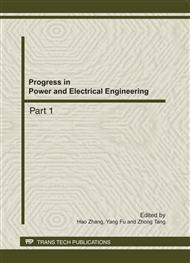p.49
p.53
p.57
p.62
p.67
p.74
p.78
p.83
p.87
Exergy Analysis and Optimized Power Generation Applied to the Co-Combustion of Sewage Sludge and Coal
Abstract:
In this paper, the classical sewage sludge and coal co-combustion power generating system was optimized. The regenerative steam in the extraction turbine was partly used for the sludge drying. And then, the mathematics model was established based on the exergy theory. Several extraction points were compared to find out the most optimization parameters (drying efficiency of the dryer, pressure and tempreture). The result showed that, with different steam temperature and pressure at different extraction points, the influence to the system exergy efficiency caused by the percentage of moisture and drying efficiency was different. When the sludge moisture content went to about 35%, the generating capacity increment was moderating. After the calculation and comparison, the error between the calculation results of the mathematical optimization model and the classical thermodynamic method was very small. The calculation in mathematical optimization model based on exergy analysis was relatively simple, and analysis of the relationship between variables was easier.
Info:
Periodical:
Pages:
67-73
Citation:
Online since:
October 2011
Authors:
Price:
Сopyright:
© 2012 Trans Tech Publications Ltd. All Rights Reserved
Share:
Citation:


